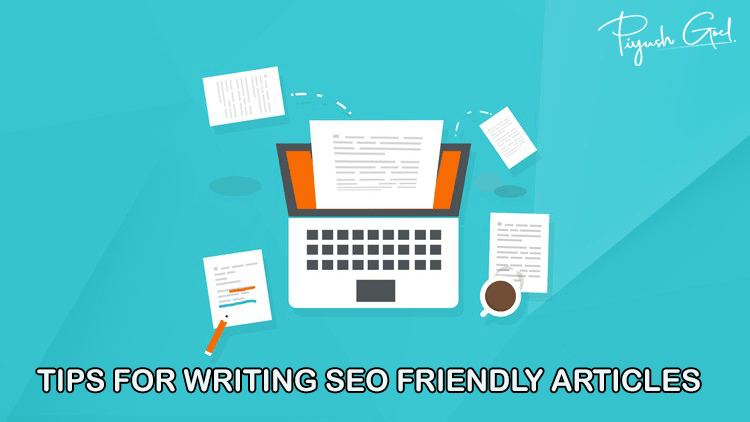
Today we are going to discuss how to write SEO friendly articles. If you follow these steps properly, it helps to bring traffic to your website; traffic to your old posts as well as it will help your website to rank on Google and other search engines. As your website start ranking in google and another search engine it will bring huge training to your website and gets a to rank.
Below are the top tips for writing SEO friendly articles:
• Keyword Research
Choose your primary keyword for which you want the article is to be ranked. Then choose 3 to 4 more keywords that are related to the main keyword to use the LSI Keyword. Take the help of the Google Keyword Planner tool or choose your keyword from Google Ads.
• Content is King write good content
You must have heard that content is king. If the content is not original then it’s not possible to rank on Google. So, the content needs to be 100% unique it is not copied from any other website. Take help from another blog to write good content for one blog but do not copy any sentences, if you do this then Google can judge very easily that your content is not unique it is copied from another website. Google has not given space for the copied content. Write in detail and through the content of that topic.
Digital Marketing training for Students
• Add appropriate headings
Use proper headings from the default blog title h1 tag or do not give it h1 tag anywhere. H2 tags can be used 2 times in a page. If your post has more titles then you can use the h3 tag which holds your other titles. Inside subheading, if you want to give a more concise title, place the h4 or h5 tag or make it bold.
• Image Optimization
Whenever you enter an image for a particular word, don’t forget to use your keyword for the image. Also, do not forget to use the link in your keyword. By doing this search engine, your image will know which subject will help your article to rank better in Google search engine.
• Permalink
Permalink is nothing but a page name, which is a piece of URL that comes after the domain name. If you do not use the URL in a curved base, its effect is also higher in rank. Use the main keyword of your post on that piece of URL. Try to use not more than four to five words in your permalink.
• Internal Link
Whenever you are writing a blog post, try to give a link to your old post. You can also give a link to your home page. The advantage is that you will get traffic for old posts also, and the search engine will recognize you. Wherever possible try to do internal links ethically.
• Outbound Link
When we go to another website, it is called an outbound link.
You can also call it an external link. In this, you can give a link to other trusted sites but when you add that link to your article then that site content should be relevant to the content of your article.
When choosing your target keywords, define the following:
• Using the wrong keywords wastes your time and budget. And at the same time understand the intent of the searcher behind the keywords you use.
• Note the long-tail keyword. Because Google gives more recognition for long-tail keywords. They may have a low search volume, but they still offer a high probability of ranking on SERPs.
• Use the SEO ranking keyword suggestion tool, Keywordtool.io, or tools like Keyword Planner tools, Google Keyword Planner to find the best keyword.
